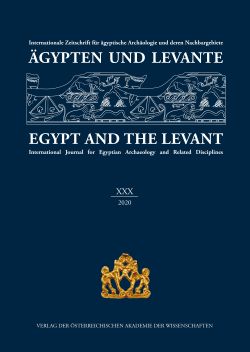
Ägypten und Levante 30, pp. 377-397, 2020/12/29
Internationale Zeitschrift für ägyptische Archäologie und deren Nachbargebiete
International Journal for Egyptian Archaeology and Related Disciplines
Jubiläumsausgabe – 30 Jahre Ägypten und Levante
Anniversary Edition – 30 Years of Egypt and the Levant
In this paper, we present the results of recent research on the potential movement of animals and other goods between Old Kingdom Egypt and the southern Levant during the Early Bronze III (c. 2850–2550 BCE). Several types of goods found at the site within a domestic residential neighbourhood (possibly of merchants) suggest that the inhabitants had extensive trade connections with the surrounding regions. A variety of durable goods derived from a variety of nonlocal sources, some of which are potentially located in Egypt. Other objects may have had a raw material origin in Egypt, but were modified in the northern Levant, and end up in the southern Levant. Scientific analysis of the normally assumed items, such as domestic livestock, demonstrate that donkey caravans were coming from Egypt during a period when trade supposedly has ceased between Egypt and the southern Levant. Isotopic analysis of donkey and other domestic animals are the first bioarchaeological evidence for the movement of livestock between the two regions – that the animals were born and raised in Egypt, brought to Canaan, and slaughtered soon after their arrival at the site. These results can challenge our traditional assumptions about evidence for direct trade between regions. We should be cautious in our labeling of raw material of artefacts that are non-local before a full scientific analysis is conducted.
Keywords: Trade; Mobility; Transport; Early Bronze; Old Kingdom; Southern Levant and Egypt; Bioarchaeology; Scientific Analyses